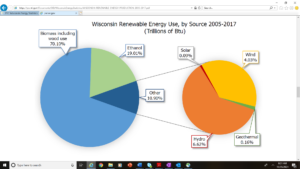Wisconsin is one of the top 25 forested states in the nation by acreage and volume. Forested land occupies about 17 million acres of Wisconsin’s nearly 37 million acres, according to data from the United States Forest Service in 2019.
Archives
Forest Characteristics, Ecology And Management In The Statewide Forest Action Plan
The success of sustainable forest management starts with a solid plan. The United States Department of Agriculture (USDA) requires each chief state forester to develop a statewide action plan every ten years. The Wisconsin plan, developed in 2020, reflects on lessons learned from the past to prepare for future challenges.
The next 12 posts are related to the “forest characteristics, ecology and management” section of the plan. Goals in this section include providing connectivity between forest patches, as well as increasing the quality and scale of forested habitat for many forest-dependent species.
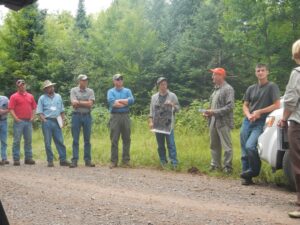
Wisconsin DNR Forestry meeting with stakeholders at Caroline Lake, Ashland County. A wide variety of forestry partners collaborated on the preparation and implementation of Wisconsin’s Statewide Forest Action Plan. Credit: Wisconsin DNR
Monitoring The Condition Of Wisconsin’s Forest Regeneration
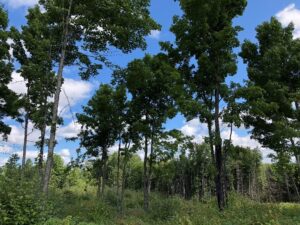
Have you ever wondered how Wisconsin’s forests are monitored for regeneration? Forest regeneration, the process of renewing tree cover by establishing young trees, is one of the most basic and important elements of sustainable forest management. After a harvest or disturbance event, like a fire or heavy winds, successful regeneration is crucial to developing healthy, productive forests that can provide sustainable economic and ecological functions. Forest regrowth patterns must be well understood to manage Wisconsin’s forest resources sustainably.
In 2018, the DNR’s Forestry Division launched the Forest Regeneration Monitoring (FRM) program to better assess the status and progression of naturally regenerating forests on county, state, federal and private lands across the state.
Continue reading “Monitoring The Condition Of Wisconsin’s Forest Regeneration”
Wood Energy – Renewable And Locally Available
Did you know that wood energy makes up a large percentage of Wisconsin’s renewable energy consumption? In 2017, biomass (including wood) accounted for an estimated 70% of the state’s renewable energy use. Are you a business, school or institution interested in learning more about whether wood energy is a good fit for you? See how the Forest Products Services program can help!
Wisconsin’s Forest Census
The Department of Agriculture’s Forest Inventory and Analysis (FIA) program is the nation’s “Forest Census” and has been ongoing, in one form or another, since the 1930s. The U.S. Forest Service (USFS) manages this program with its state partners, allowing every state to get a snapshot of the condition of its forestland in a given year.
FIA data is frequently used to understand how forests across the state are changing over time. This analysis informs sound forest management and planning, allows Wisconsin’s forest products industry to evaluate timber availability and helps us better understand the forests that we use for many purposes.
Careers In The Forest Products Industry
The forest products industry employs more than 63,000 workers in every corner of the state. Jobs in forest management, logging and wood and paper manufacturing are an important part of our state’s economy. Consider a rewarding career in the forest industry, with occupations including:

Pictured above is a cabinetmaker at a custom cabinet company in northeastern Wisconsin. Credit: Wisconsin DNR
- Logger
- Forester
- Truck driver
- Log scaler
- Lumber inspector
- Mill production worker
- Maintenance technician
- Electrician
- Process engineer
- Quality control specialist
- Sales representative
Forest Markets – Connecting Forest Management, Products And The Economy
Forest products markets play an important role across Wisconsin’s urban and rural economies and are strongly tied to healthy, well-managed forests. Division staff in the Forest Products Services (FPS) team support market growth by investigating new uses for Wisconsin wood, providing professional guidance on emerging products and technologies, gathering data on Wisconsin’s timber product output and being a bridge between Wisconsin producers and buyers (i.e. the marketplace).
A market segment experiencing notable growth is urban wood recycling. Historically, urban trees were used by only a few mills in the state. However, the increase of trees killed by invasive insects and disease caused many municipalities to seek alternative uses for urban wood rather than disposing material in a landfill. Recent efforts to market this growing source of material and develop ways to recycle urban trees within communities led Wisconsin to become one of the leading states in urban wood utilization. Throughout the state, markets continue to grow; at least 30 companies are producing products made from urban wood.
Continue reading “Forest Markets – Connecting Forest Management, Products And The Economy”
Working To Improve Forest Utilization
DNR forest products staff work closely with businesses and organizations to use Wisconsin wood more profitably and effectively.
This work ranges from connecting buyers with suppliers of timber and other wood products, to directly assisting both rural and urban forest businesses to improve their profitability and marketing position. In addition, staff partner with members of the forest industry to host and teach workshops on lumber grading, kiln drying, workplace safety and marketing. They also provide technical assistance to improve mill productivity and product quality and collect data for assessing business development opportunities. Learn more about Wisconsin’s forest businesses here.
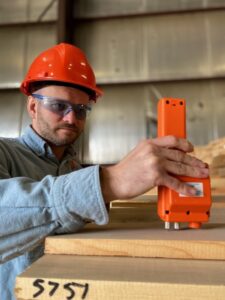
Forest Products Specialist assessing moisture uniformity of dried hardwood lumber during a mill assessment. Credit: Wisconsin DNR
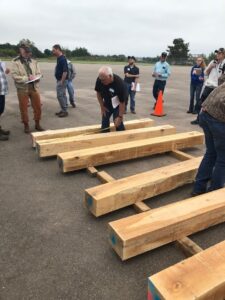
Participants practicing railway tie grading procedures at an industry workshop hosted by the Forest Products Services team. Credit: Wisconsin DNR
Made of Wood
How many things can you find in your home that are made of wood?

There are thousands of products made of wood. These are just a few found in one household. Photo Credit/ Wisconsin DNR
A Plethora of Products
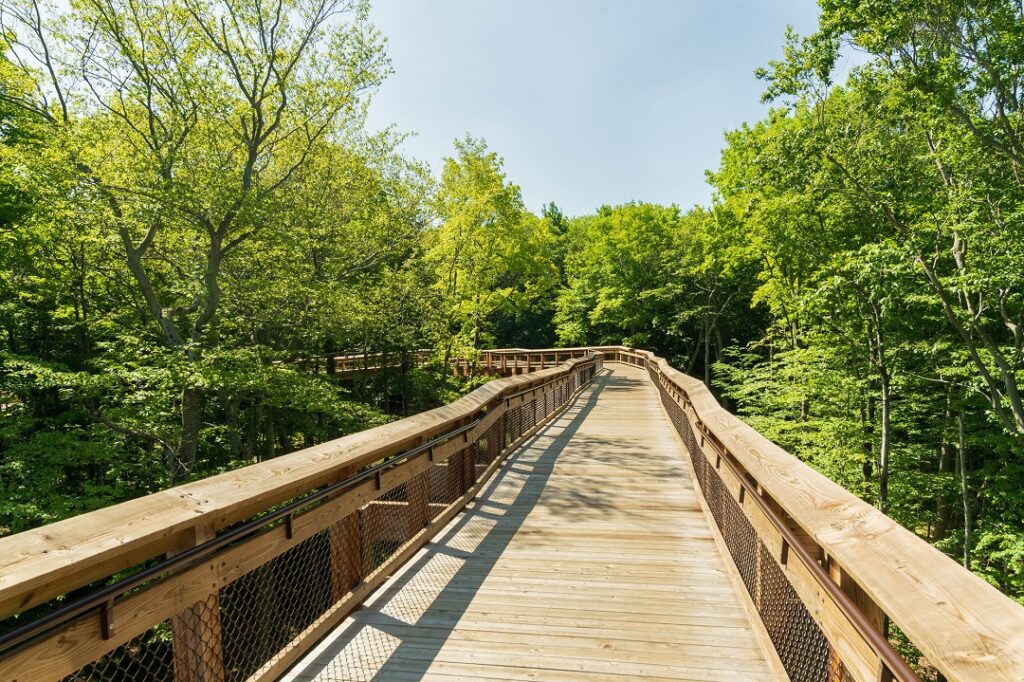 Dressers, beds, tables, chairs, pianos, guitars, boardwalks and birdhouses. What do they all have in common? They’re all forest products! These are just a few of the creations that are made from timber and they all are spectacular. all forest products! These are just a few of the creations that are made from timber and they all are spectacular.
Dressers, beds, tables, chairs, pianos, guitars, boardwalks and birdhouses. What do they all have in common? They’re all forest products! These are just a few of the creations that are made from timber and they all are spectacular. all forest products! These are just a few of the creations that are made from timber and they all are spectacular.

